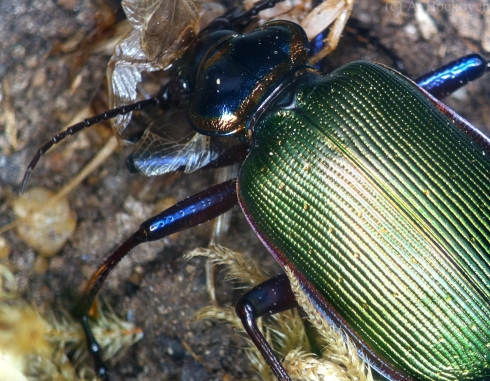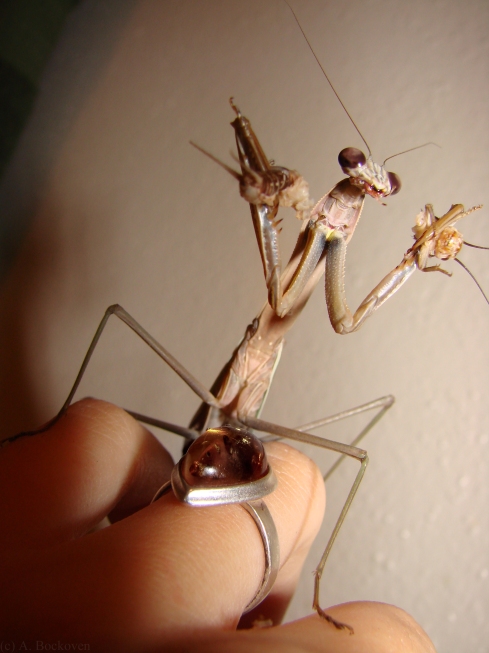
Calosoma scrutator, the fiery searcher.
Here’s a colorful beetle I run across fairly often (they are extremely popular in student collections). While many members of the genus Calosoma, the caterpillar hunters, are black in color, a handful of species (in the creatively named subgenus Calosoma) have metallic green elytra. Calosoma scrutator, the fiery searchers, are further distinguished by a red/gold band around the edge of the wing cases. These beetles are fast and aggressive, preying primarily on caterpillars as both adults and larvae. We recently had a few live beetles donated for an insect zoo we did for a local elementary school, and I got to spend a good deal more time observing them than I ever have in the field.

Caterpillar hunter attacking a cricket.
Not having any caterpillars around, I’ve been feeding them crickets, which they do well on so long as everybody in the tank gets their own cricket meal. There’s a good deal of scrambling and tussling as each beetle attempts to secure a cricket and retreat to a quiet spot to eat, easily devolving into slapstick if two possessive beetles happen to bump into each other. I’ve started passing out crickets with tweezers to minimize the chaos. Luckily, they all appear to be too armored to take any real damage from each other, and they haven’t shown any inclination to eat each other–though at least one forum thread I found says they may. When not eating or searching about the tank they spend most of their time burrowing or tucked under bits of wood and debris.

Nom nom.
Caterpillar hunters possess a ferocious pair of mandibles, but don’t appear to be particularly adept at manipulating their struggling prey–unlike spiders with their pedipalps or mantises with their raptorial forelegs. Instead they scissor away at the soft fleshy parts of their prey, slowly masticating it into a pulp. I have some rather alarmingly gory video that I’ll try to get up at some point.
Apparently the adults have been known to live for an impressive three years, so I’ll have to see if I can keep these flashy fellows around.

Nom nom nom
Tags: Beetles, Calosoma scrutator, Caterpillar hunters, Crickets, Fiery searcher, Ground beetles, Insects
















Recent Comments